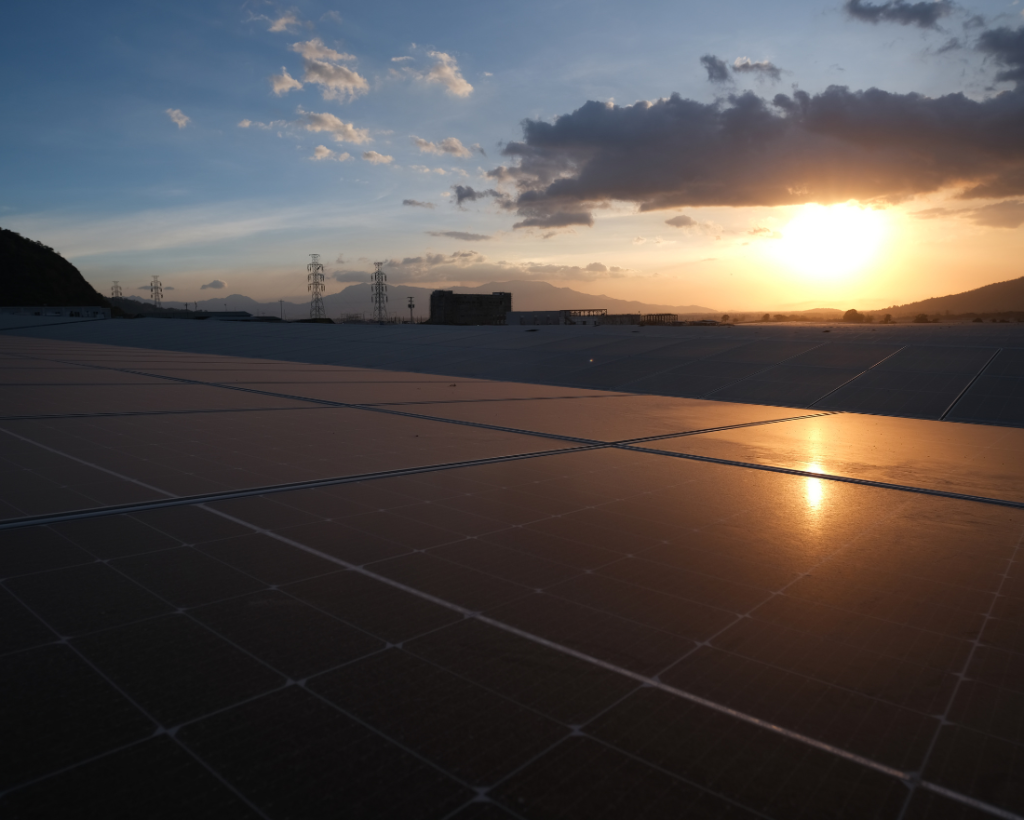The global push toward renewable energy capacity has significantly transformed how countries generate power. The Philippines is no exception. Its unique geography and rich natural resources make it an ideal market for renewable energy development and consumption. But just how capable is the country in successfully harnessing these resources for a sustainable future?
In this blog, we’ll explore the different types of renewable energy the Philippines can tap into, the current challenges it faces and how key players like ACEN are driving the country’s progress toward a cleaner, greener energy landscape.
What is renewable energy capacity?
Renewable energy capacity refers to the amount of power that can be generated from renewable sources such as solar, wind and geothermal energy. Unlike fossil fuels, which are finite and deplete over time, renewable energy comes from naturally replenished sources. This sustainability factor is key to reducing the environmental impact of energy generation.
In the Philippines, renewable energy is particularly significant as the country has abundant solar, wind and geothermal resources. The Department of Energy (DOE) has set ambitious goals to increase the share of renewables in the national energy mix to 35% by 2030 and 50% by 2040, reflecting the growing importance of renewable energy for the country’s future.

Renewable energy sources in the Philippines
The Philippines is a tropical archipelago with access to various renewable energy resources. The Philippines’ energy consumption is still dominated by coal, but the share of renewable energy is steadily increasing. According to the International Trade Administration, renewable energy makes up 32.7% of the existing energy mix in the country.
The renewable energy sector in the Philippines consists of several key resources:
- Solar energy: Solar power is playing a growing role in the Philippines’ power consumption. Projects like distributed solar farms, floating solar and rooftop solar are helping increase electrification in remote areas.
- Wind energy: Wind farms are expanding across the country, driven by supportive policies like the feed-in-tariff system. Offshore wind projects are also emerging as a promising area for future development, boosting the Philippines’ renewable energy potential.
- Geothermal energy: Geothermal energy stands out as a reliable renewable resource in the Philippines. With established geothermal fields and new technologies enhancing output, it continues to provide a steady and sustainable energy supply.
- Hydropower: Hydropower is a significant renewable resource in the Philippines. The National Renewable Energy Program aims to expand small and medium-sized hydropower plants, including run-of-river and reservoir-based systems, to harness the country’s hydropower potential.
- Biomass: Biomass energy is being leveraged through biogas facilities. These efforts transform agricultural waste into energy, combining waste management with renewable energy generation.
Government policies, like the Renewable Energy Act of 2008, have been essential in pushing this agenda forward. This established a framework for promoting the development of renewable energy projects in the Philippines. It offers incentives like tax exemptions and feed-in tariffs to encourage investment in clean energy. These initiatives aim to reduce the country’s reliance on imported fossil fuels, ensure energy security and address climate change.
Opportunities for renewable energy in the Philippines
In 2023, the country’s total renewable energy installed capacity is approximately 8,400 MW, opening up numerous opportunities for the country.
- Economic growth: The shift to renewable energy opens up new economic opportunities for the Philippines by attracting investments and creating jobs. The renewable sector has the potential to generate thousands of jobs in manufacturing, installation, operations and maintenance, especially benefiting rural communities.
- Energy independence: Developing renewable energy can reduce the country’s dependence on imported fossil fuels, improving energy security and protecting the Philippines from price fluctuations in the global fuel market.
- Cost stability: In the long run, investing in renewable energy can help stabilize electricity costs, offering more affordable energy for consumers.
- Environmental benefits: Renewable energy reduces greenhouse gas emissions, and helps mitigate the effects of climate change. This is particularly crucial for the Philippines, which is highly vulnerable to typhoons, floods and rising sea levels.
ACEN’s commitment to renewable energy
As the Philippines aims to transition to cleaner energy sources, ACEN has emerged as a key player in this sector. As one of the largest renewable energy companies by capacity, ACEN has successfully achieved its goal of reaching 5 GW in 2025 of renewable energy ahead of schedule. This ambitious goal reflects ACEN’s vision of leading the country’s energy transition while promoting sustainable growth.
ACEN has made significant strides in building solar, wind, geothermal and battery energy storage projects across the country. For instance, the company’s solar power plants in Negros Island, Laguna, Zambales, Pampanga and Bataan, and wind farms in Guimaras and Ilocos Norte are among the largest renewable energy projects in the Philippines. These projects not only provide clean energy but also address the Philippines’ energy demand, create jobs, foster local economic development and improve energy access in underserved regions.
The shift toward renewable energy is an economic and social opportunity. By leading the charge in building renewable energy capacity, ACEN is helping to shape a cleaner, more sustainable future for the Philippines and the world.
References:
- Balita, C. (2024, July 16). Philippines: Installed capacity of renewable energy power plants 2023 | statista. Statista. https://www.statista.com/statistics/1237397/installed-capacity-of-renewable-energy-per-grid-philippines/
- International Trade Administration. (2023, September 28). Philippines Renewable Energy. International Trade Administration | Trade.gov. https://www.trade.gov/market-intelligence/philippine-renewable-energy-opportunities
- Philippines – Energy. International Trade Administration | Trade.gov. (2024, January 23). https://www.trade.gov/country-commercial-guides/philippines-energy-0
- Power Development Plan 2023-2050. Department of Energy Philippines. (n.d.). https://legacy.doe.gov.ph/energy-information-resources?q=power-development-plan
- Renewable energy. Education. (n.d.). https://education.nationalgeographic.org/resource/renewable-energy/
- Republic Act No. 9513. Official Gazette of the Republic of the Philippines. (2008, December 17). https://www.officialgazette.gov.ph/2008/12/16/republic-act-no-9513/

